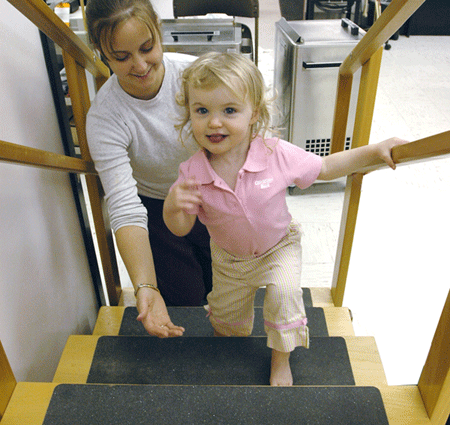(Source.Google.com.pk)
Free Psychic Love Biography










Free Psychic Love Biography
Ivan Petrovich Pavlov (Russian: Ива́н Петро́вич Па́влов; 26 September [O.S. 14 September] 1849 – 27 February 1936) was a famous Russian physiologist. From his childhood days Pavlov demonstrated intellectual brilliance along with an unusual energy which he named "the instinct for research".Inspired when the progressive ideas which D. I. Pisarev, the most eminent of the Russian literary critics of the 1860s and I. M. Sechenov, the father of Russian physiology, were spreading, Pavlov abandoned his religious career and decided to devote his life to science. In 1870 he enrolled in the physics and mathematics faculty at the University of Saint Petersburg to take the course in natural science.Ivan Pavlov devoted his life to the study of physiology and sciences, making several remarkable discoveries and ideas that were passed on from generation to generation.He won the Nobel Prize for Physiology or Medicine in 1904.
Ivan Pavlov, the eldest of eleven children,was born in Ryazan, now in the Central Federal District of Russia, where his father, Peter Dmitrievich Pavlov (1823–1899), was a village priest.Pavlov's mother, Varvara Ivanovna Uspenskaya (1826–1890), was a devoted homemaker. As a child, Pavlov participated willingly in house duties, such as doing the dishes and taking care of his siblings. He loved to garden, ride his bicycle, row, swim, and play, gorodki and he devoted his summer vacations to these activities. Although able to read by the age of 7, Pavlov was seriously injured when he fell from a high wall onto a stone pavement. As a result of his injuries, he did not undergo formal schooling until he was 11 years old.
Pavlov attended and was graduated from the Ryazan Church School before entering the local theological seminary. In 1870, Pavlov left the seminary without graduating to attend the university at St. Petersburg. There he enrolled in the physics and math department and took natural science courses. In his fourth year, his first research project on the physiology of the nerves of the pancreas won him a prestigious university award. In 1875, Pavlov completed his course with an outstanding record and received the degree of Candidate of Natural Sciences. However, impelled by his overwhelming interest in physiology, he decided to continue his studies and proceeded to the Academy of Medical Surgery. While at the Academy of Medical Surgery, Pavlov became an assistant to his former teacher, Tyson. When Tyson was replaced by another teacher, Pavlov left the department.
After some time, he obtained a position as a laboratory assistant to Professor Ustimovich at the physiological department of the Veterinary Institute. where for two years he worked on the circulatory system for his medical dissertation. In 1878, Professor S.P. Botkin, a famous Russian clinician, invited the gifted young physiologist to work in the physiological laboratory at his clinic as its chief. In 1879 Pavlov graduated from the Medical Military Academy with an award of a gold medal for his research work. After a competitive examination, Pavlov won a fellowship at the Academy for postgraduate work.This together with his position as Director of the Physiological Laboratory at the clinic of the famous Russian clinician, S. P. Botkin, enabled him to continue his research work. In 1883, he presented his doctor's thesis on the subject of The centrifugal nerves of the heart in which he developed his idea of "nervism", illustrated by the intensifying nerve of the heart which he had discovered, and furthermore laid down the basic principles on the trophic function of the nervous system. In this as well as in his collaboration with the Botkin clinic, Pavlov showed that there existed a basic pattern in the regulation of reflex in the activity of circulatory organs.
After completing his doctorate, Pavlov went to Germany where he studied in Leipzig with Carl Ludwig in the Heidenhain laboratories in Breslau. He remained there from 1884 to 1886. Heidenhain was studying digestion in dogs, using an exteriorized section of the stomach. However, Pavlov perfected the technique by overcoming the problem of maintaining the external nerve supply. The exteriorized section became known as the Heidenhai or Pavlov pouch. After two years (1884–1886), Pavlov returned from Germany to look for a new position. His application for the chair of physiology at the University of Saint Petersburg was rejected. Eventually, Pavlov was given the chair of pharmacology at the Tomsk University and then at the University of Warsaw. However, he went to neither place. In 1890, he was appointed the role of professor of Pharmacology at the Military Medical Academy and occupied the position for 5 years.[ Pavlov was invited to the Institute of Experimental Medicine in 1891 to organize and direct the Department of Physiology. Over a 45 year period, under his direction it became one of the most important centers of physiological research. While Pavlov directed the Department of Physiology at the Institute, he also transferred to the chair of physiology at the Medical Military Academy. This change in positions at the Academy occurred in 1895. He headed the physiology department at the Academy continuously for three decades.Also, starting in 1901, Pavlov was nominated for the Nobel Prize in Physiology or Medicine for four successive years. However, he did not win because his nominations were not specific to any discovery and were based on a variety of laboratory findings. In 1904, Pavlov was awarded the Nobel laureate "in recognition of his work on the physiology of digestion, through which knowledge on vital aspects of the subject has been transformed and enlarged".
While at the Institute of Experimental Medicine he carried out his classical experiments on the digestive glands which is how he eventually won the Nobel prize mentioned above. Pavlov investigated the gastric function of dogs, and later children,by externalizing a salivary gland so he could collect, measure, and analyze the saliva and what response it had to food under different conditions. He noticed that the dogs tended to salivate before food was actually delivered to their mouths, and set out to investigate this "psychic secretion", as he called it. Pavlov’s laboratory housed a full-scale kennel for the experimental animals. Pavlov was interested in observing their long-term physiological processes. This required keeping them alive and healthy in order to conduct chronic experiments, as he called them. These were experiments over time, designed to understand the normal functions of animals. This was a new kind of study, because previously experiments had been “acute,” meaning that the dog went through vivisection and was ultimately killed in the process.
A 1921 article by S. Morgulis in the journal Science, came as a critique of Pavlov's work in that it addressed concerns about the environment in which these experiments had been performed. Based on a report from H. G. Wells, claiming that Pavlov grew potatoes and carrots in his lab, the article stated, "It is gratifying to be assured that Professor Pavlov is raising potatoes only as a pastime and still gives the best of his genius to scientific investigation".Also in 1921, Pavlov began holding laboratory meetings known as the ‘Wednesday meetings’ where he spoke bluntly on many topics, including his views on psychology. These meetings lasted until he died in 1936.
Pavlov was highly regarded by the Soviet government, and he was able to continue his research until he reached a considerable age. He was praised by Lenin. However, despite the praise from the Soviet Union government, the money that poured out to support his laboratory, and the honours he was given, Pavlov made no attempts to conceal the disapproval and contempt in which he held Soviet Communism.For example, in 1923 he claimed that we would not sacrifice even the hind leg of a frog to the type of social experiment that the regime was conducting in Russia. Also, in 1927, he wrote to Stalin protesting at what was being done to Russian intellectuals and saying he was ashamed to be a Russian. After the murder of Sergei Kirov in 1934, Pavlov wrote several letters to Molotov criticizing the mass persecutions which followed and asking for the reconsideration of cases pertaining to several people he knew personally.
Conscious until his very last moment, Pavlov asked one of his students to sit beside his bed and to record the circumstances of his dying. He wanted to create unique evidence of subjective experiences of this terminal phase of life.Pavlov died of double pneumonia at the age of 86. He was given a grandiose funeral, and his study and laboratory were preserved as a museum in his honour.
Ivan Pavlov married Seraphima Vasilievna Karchevskaya on 1 May 1881. They met in 1878 or 1879 when Seraphima went to St. Petersburg to study at the Pedagogical Institute. Seraphima, called Sara for short, was born in 1855. In her later years, she suffered from ill health and died in 1947. The first nine years of their marriage were marred by financial problems. Pavlov and his wife often had to stay with others in order to have a home. For a while they even had to live apart so they could find hospitality. Although their general lack of money caused despair, material welfare was a secondary consideration.
Sara’s first pregnancy ended in a miscarriage. When Sara became pregnant for the second time, however, the couple took precautions and the baby arrived safely. Their first child, a son, was named Mirchik. Sara adored Mirchik and became very depressed after he died very suddenly while still a child. Sara and Mirchik were staying in a country home when he died, most likely as a result of some children’s summer disease. Ivan and Sara eventually had three more children: Vsevolod, Vladimir, and Vera. Their youngest son, Vsevolod, died of pancreatic cancer in 1935, only one year before Pavlov’s own death.
Pavlov contributed to many areas of physiology and neurological sciences. Most of his work involved research in temperament[citation needed], conditioning and involuntary reflex actions. Pavlov performed and directed experiments on digestion, eventually publishing The Work of the Digestive Glands in 1897, after 12 years of research. His experiments earned him the 1904 Nobel Prize in Physiology and Medicine. These experiments included surgically extracting portions of the digestive system from animals, severing nerve bundles to determine the effects, and implanting fistulas between digestive organs and an external pouch to examine the organ's contents. This research served as a base for broad research on the digestive system.
Further work on reflex actions involved involuntary reactions to stress and pain. Pavlov extended the definitions of the four temperament types under study at the time: phlegmatic, choleric, sanguine, and melancholic, updating the names to "the strong and impetuous type, the strong equilibrated and quiet type, the strong equilibrated and lively type, and the weak type." Pavlov and his researchers observed and began the study of transmarginal inhibition (TMI), the body's natural response of shutting down when exposed to overwhelming stress or pain by electric shock.This research showed how all temperament types responded to the stimuli the same way, but different temperaments move through the responses at different times. He commented "that the most basic inherited difference. .. was how soon they reached this shutdown point and that the quick-to-shut-down have a fundamentally different type of nervous system."
Carl Jung continued Pavlov's work on TMI and correlated the observed shutdown types in animals with his own introverted and extroverted temperament types in humans. Introverted persons, he believed, were more sensitive to stimuli and reached a TMI state earlier than their extroverted counterparts. This continuing research branch is gaining the name highly sensitive persons.
William Sargant and others continued the behavioural research in mental conditioning to achieve memory implantation and brainwashing (any effort aimed at instilling certain attitudes and beliefs in a person).
The concept for which Pavlov is famous is the "conditioned reflex" (or in his own words the conditional reflex: the translation of условный рефлекс into English is debatable) he developed jointly with his assistant Ivan Filippovitch Tolochinov in 1901. He had come to learn this concept of conditioned reflex when examining the rates of salivations among dogs. Pavlov had learned then when a bell was rung in subsequent time with food being presented to the dog in consecutive sequences, the dog will initially salivate when the food is presented. The dog will later come to associate the ringing of the bell with the presentation of the food and salivate upon the ringing of the bell. Tolochinov, whose own term for the phenomenon had been "reflex at a distance", communicated the results at the Congress of Natural Sciences in Helsinki in 1903. Later the same year Pavlov more fully explained the findings, at the 14th International Medical Congress in Madrid, where he read a paper titled The Experimental Psychology and Psychopathology of Animals.
As Pavlov's work became known in the West, particularly through the writings of John B. Watson, the idea of "conditioning" as an automatic form of learning became a key concept in the developing specialism of comparative psychology, and the general approach to psychology that underlay it, behaviorism. Pavlov's work with classical conditioning was of huge influence to how humans perceive themselves, their behavior and learning processes and his studies of classical conditioning continue to be central to modern behavior therapy.The British philosopher Bertrand Russell was an enthusiastic advocate of the importance of Pavlov's work for philosophy of mind.
Pavlov's research on conditional reflexes greatly influenced not only science, but also popular culture. Pavlovian conditioning was a major theme in Aldous Huxley's dystopian novel, Brave New World, and also to a large degree in Thomas Pynchon's Gravity's Rainbow.
It is popularly believed that Pavlov always signaled the occurrence of food by ringing a bell. However, his writings record the use of a wide variety of stimuli, including electric shocks, whistles, metronomes, tuning forks, and a range of visual stimuli, in addition to the ring of a bell. Catania cast doubt on whether Pavlov ever actually used a bell in his famous experiments. Littman tentatively attributed the popular imagery to Pavlov’s contemporaries Vladimir Mikhailovich Bekhterev and John B. Watson, until Thomas, found several references that unambiguously stated Pavlov did, indeed, use a bell.
It is less widely known that Pavlov's experiments on the conditional reflex extended to children, some of whom underwent surgical procedures, similar to those performed on the dogs, for the collection of saliva.
In 1964 the eminent psychologist H. J. Eysenck reviewed Pavolv's "Lectures on Conditioned Reflexes" for the British Medical Journal: Volume I - "Twenty-five Years of Objective Study of the Higher Nervous Activity of Animals", Volume II - "Conditioned Reflexes and Psychiatry".
Free Psychic Love Readings

Free Psychic Love Readings

Free Psychic Love Readings

Free Psychic Love Readings

Free Psychic Love Readings

Free Psychic Love Readings

Free Psychic Love Readings

Free Psychic Love Readings

Free Psychic Love Readings

Free Psychic Love Readings

Free Psychic Love Readings




































